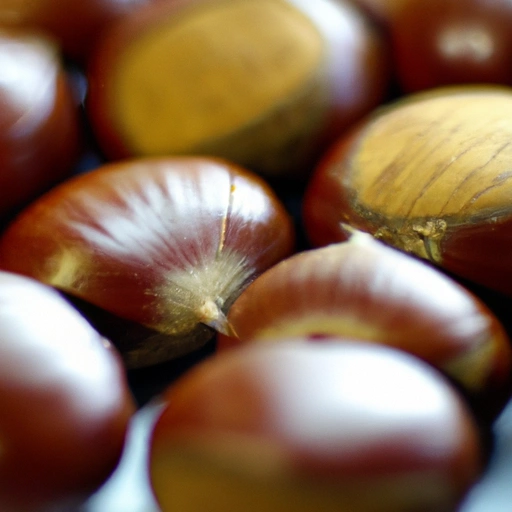Chestnut
Description

Chestnuts are the large, edible nuts of chestnut trees (Castanea species), which are native to temperate regions of the Northern Hemisphere. Unlike other nuts, chestnuts have a high starch content and are lower in fat, making them a unique ingredient in both sweet and savory dishes. They boast a sweet, nutty flavor and can be consumed raw, roasted, boiled, or ground into flour.
Common uses
Chestnuts are commonly used in a variety of culinary applications, from confections and desserts to savory stuffings and soups. They can be candied or used as a filling in pastries, or pureed for use in sauces and spreads. In many cultures, roasted chestnuts are a popular street food during the winter months.
Nutritional value
Calories
Per 100 grams, boiled chestnuts contain approximately 131 calories (549 kJ).
Protein
Chestnuts offer about 2 grams of protein per 100 grams.
Fat
They are low in fat, with just 1.4 grams per 100 grams.
Carbohydrates
Carbohydrates are abundant at around 28 grams per 100 grams.
Vitamins
Chestnuts are a good source of Vitamin C and provide B vitamins including B6 and folate.
Minerals
They contain essential minerals such as potassium, magnesium, and iron.
Health benefits
Due to their high fiber content, chestnuts can aid in digestion and help maintain a healthy gut. The presence of antioxidants like Vitamin C and other compounds contributes to the reduction of inflammation and the prevention of chronic diseases. Chestnuts can also assist in the management of blood sugar levels, making them beneficial for individuals with diabetes.
Potential risks
For those with nut allergies, chestnuts can pose a risk of allergic reactions. Additionally, due to their high carbohydrate content, excessive consumption may impact blood sugar levels. As with any food, moderation is key to avoiding potential risks.
Common recipes
Popular recipes include chestnut stuffing for poultry, chestnut soup, marron glacé (candied chestnuts), and Mont Blanc (a chestnut-based dessert). They are also incorporated into cakes, breads, and pancakes.
Cooking methods
Chestnuts can be roasted, boiled, steamed, or ground. Roasting is a traditional method that enhances their sweet flavor, while boiling makes them softer and easier to puree.
Pairing with other ingredients
Chestnuts pair well with meats like turkey and pork, with spices such as cinnamon and clove, and with other nuts and dried fruits. They also complement chocolate and creamy ingredients in desserts.
Summary
Chestnuts are a nutritious and versatile ingredient enjoyed in a variety of culinary traditions around the world. They offer a rich history, a unique flavor profile, and a multitude of health benefits. Whether roasted for a snack, incorporated into holiday dishes, or used as a flour substitute in baking, chestnuts provide a delightful taste and texture that can be adapted to numerous recipes.